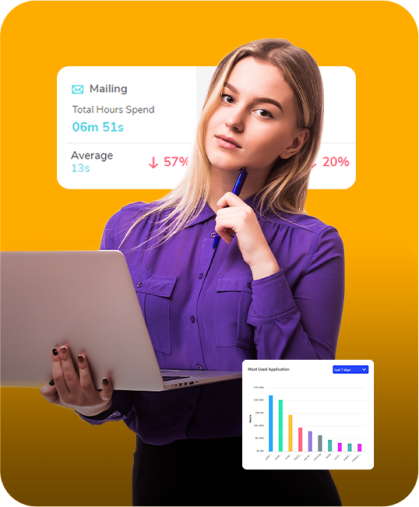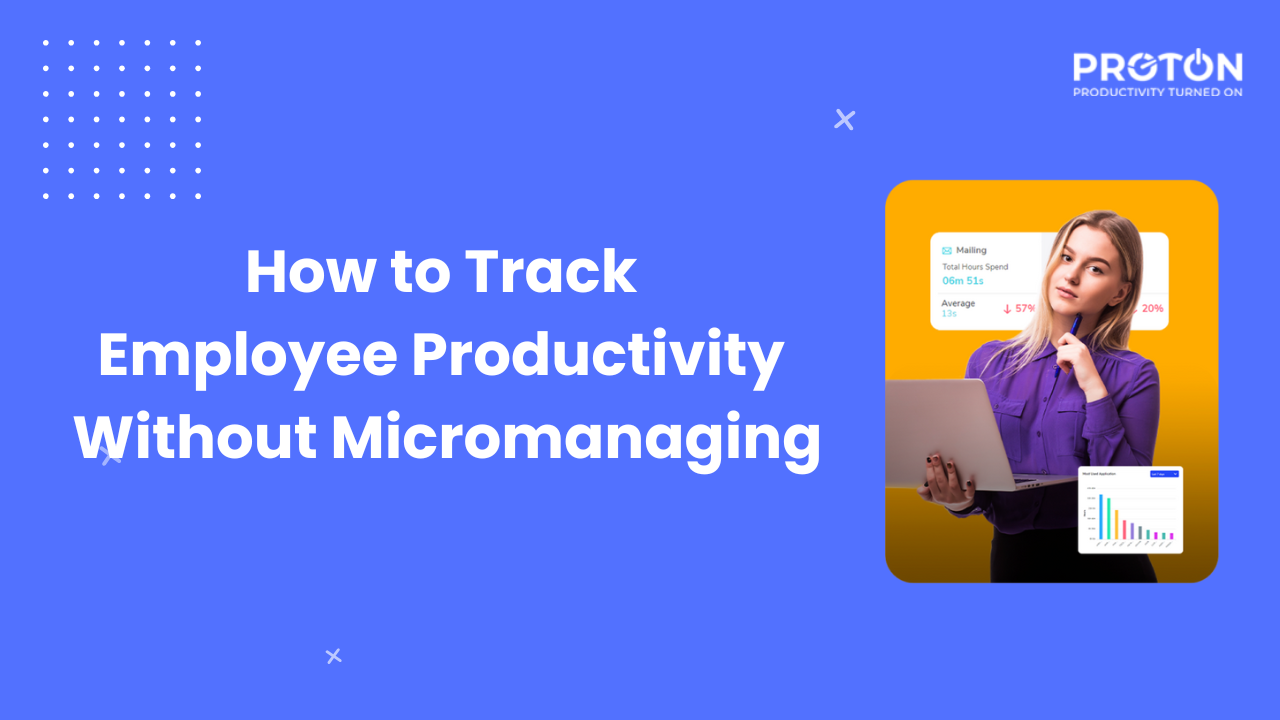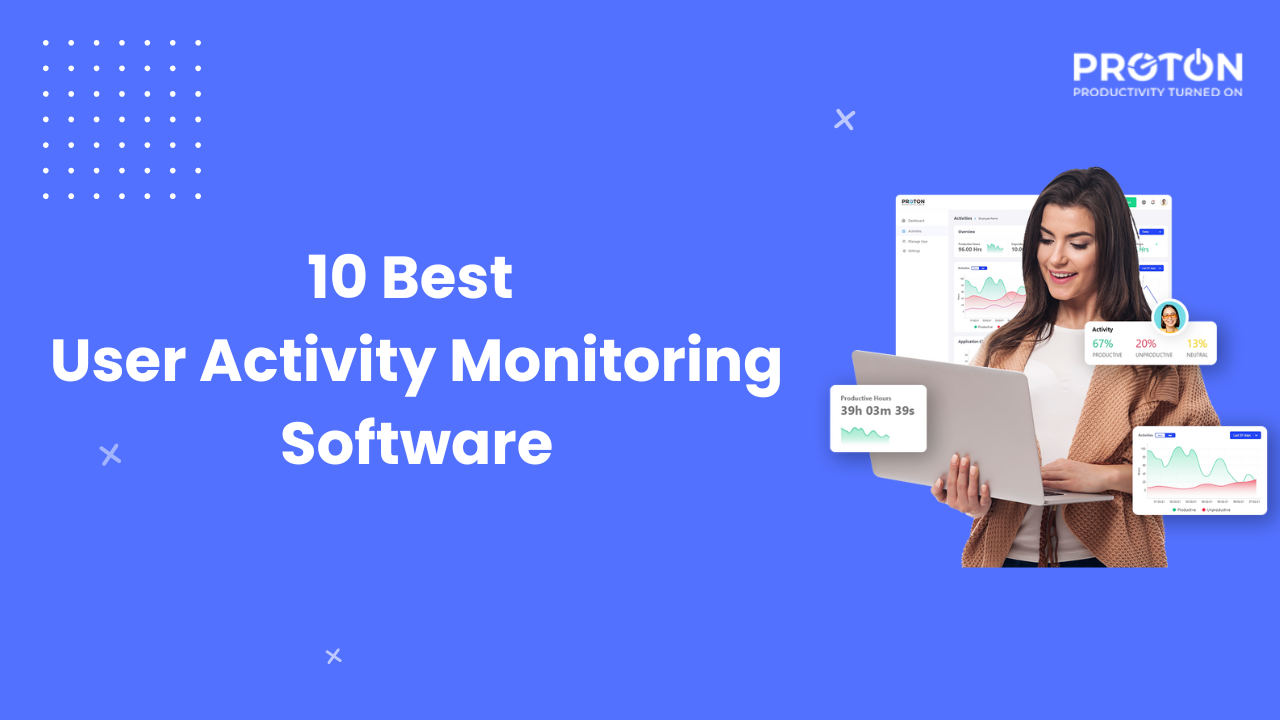In today’s fast-paced digital landscape, data security and compliance are no longer optional; they are essential. Whether you are running a small business or a large corporation, keeping tabs on what is happening within your systems is key to protecting sensitive information and maintaining productivity. However, with remote and hybrid work becoming the norm, monitoring user activity is no longer just an option but a necessity.
Imagine if your company’s confidential data is accidentally shared or deliberately leaked by an insider. Without the right monitoring systems in place, you might not even know it happened until it is too late.
This is where User Activity Monitoring (UAM) comes in. It allows you to track, analyse, and manage employee activity to prevent data breaches, boost efficiency, and stay compliant with industry regulations.
In this guide, you will find everything you need to know about UAM right from what it is, why it matters, the best tools, and how to implement it effectively while respecting employee privacy.
What Is User Activity Monitoring (UAM)?
User Activity Monitoring is exactly what it sounds like—it tracks and records user actions on your company’s network, applications, and devices.

Think of it as a digital security camera for your systems, giving you visibility into:
- Logins and logouts: Who is accessing your systems and when?
- File interactions: What documents are being opened, modified, or transferred?
- Application usage: Which programs employees are using and for how long.
- Network activity: What websites are being visited, and whether any suspicious data transfers are occurring.
But UAM is not just about catching malicious activity. It also helps you:
- Identify workflow inefficiencies.
- Protect sensitive data from accidental exposure.
- Ensure compliance with industry regulations.
Why Is User Activity Monitoring Important?
You might be wondering why tracking user activity is necessary. Here is why it plays a vital role:
-
Enhancing Security
With cyber threats constantly evolving, it is crucial to stay ahead of potential risks. User Activity Monitoring (UAM) helps by:
- Detecting suspicious behaviour: Identifies unusual file transfers or unauthorized login attempts.
- Enabling real-time responses: Allows immediate action to prevent security breaches when abnormal patterns are detected.
-
Mitigating Insider Threats
Not all security risks come from external hackers. Insider threats—whether intentional or accidental—can lead to serious data breaches. UAM helps by:
- Flagging large data extractions: Detects abnormal file downloads or transfers.
- Monitoring unauthorized access: Identifies employees attempting to view restricted information.
-
Boosting Employee Productivity
Knowing that their activities are monitored often encourages employees to remain focused. UAM tools can:
- Spot unproductive behaviour: Identify excessive social media use or other time-wasting activities without micromanaging.
- Track remote work performance: Ensures visibility into off-site employee productivity, which is especially valuable with the rise of remote work.
-
Ensuring Regulatory Compliance
For organizations in regulated industries, adhering to data privacy and security regulations is essential. UAM simplifies compliance by:
- Maintaining audit logs: Automatically records user actions, making audits easier.
- Identifying compliance gaps: Flags unauthorized data access or policy violations.
- Generating detailed reports: Provides documentation to demonstrate compliance with industry regulations.
Types of User Activity Monitoring
User Activity Monitoring tools come in various forms, depending on what you need to track. Here are the key types:
-
Network Monitoring:
Tracks all network-related activities, including data transfers, visited websites, and bandwidth usage. This is essential for identifying unusual patterns that may indicate a security threat.
-
Endpoint Monitoring:
Tracks individual devices (laptops, desktops, mobile devices). It logs activity like application usage, keystrokes, and USB access.
-
Employee Productivity Monitoring:
Focuses on how employees spend their work hours. It tracks idle time, time spent on apps, and overall performance trends. It helps managers identify inefficiencies and improve workflows.
-
Remote Desktop Monitoring:
Allows you to view and record remote desktop sessions in real time. This is particularly useful for remote teams to ensure accountability.
-
Cloud Activity Monitoring:
Monitors cloud-based tools (Google Drive, Dropbox, etc.) to track file transfers and detect unauthorized data sharing.
Top User Activity Monitoring Tools
Selecting the right UAM tool can be overwhelming, given the number of options available. Here are five top-rated tools, starting with Proton, that offer robust monitoring capabilities:
Proton
Proton is a leading UAM solution designed to enhance data security and optimize workforce productivity. It offers:
- Real-time activity tracking: Monitor app usage, web activity, and file movements in real time.
- Detailed reports and analytics: Gain insights into employee productivity and detect irregular behaviour.
- Customizable alerts: Set up notifications for suspicious or unauthorized activities.
- Privacy-conscious design: Proton balances security with employee privacy by adhering to data protection regulations.

Why Proton?
Unlike many UAM tools, Proton uses end-to-end encryption, ensuring that even the monitored data is protected.
-
Teramind
Known for its insider threat detection, Teramind offers robust screen recording, keystroke logging, and file tracking capabilities.
- Focus: Insider threat detection.
- Features: Real-time monitoring, behaviour analysis, and policy enforcement.
- Best for: Large companies with complex security needs.
-
Veriato
This tool focuses on employee behaviour analytics, helping businesses detect insider threats by identifying unusual activity patterns.
- Focus: Risk management and productivity tracking.
- Features: AI-powered behaviour analytics.
- Best for: Mid-sized and large businesses.
-
ActivTrak
Great for productivity management, offering insights into how employees spend their time online. It provides activity reports and allows for customizable alerts.
- Focus: Workforce productivity.
- Features: Application usage tracking and detailed reporting.
- Best for: SMBs aiming to enhance efficiency.
-
Hubstaff
Primarily used for remote team monitoring, it tracks time spent on tasks, website usage, and keyboard/mouse activity.
Key Features of User Activity Monitoring (UAM) Tools
When selecting a UAM solution, consider these essential features:
- Real-Time Monitoring: Observe employee activities as they happen.
- Screen Capture and Recording: Capture screenshots or record user actions for future reference.
- Keystroke Logging: Track keyboard inputs, including messages and search terms.
- File and Data Tracking: Monitor file access, modifications, and transfers. Identify suspicious downloads or unauthorized data movements.
- Alerts and Notifications: Receive instant alerts for suspicious or policy-violating activities.
- Comprehensive Reporting: Generate detailed reports for compliance, auditing, and performance analysis.
Best Practices for Implementing UAM
UAM is a powerful tool, but improper usage can feel intrusive. Here is how to apply it responsibly:
- Prioritize Privacy: Choose privacy-friendly solutions like Proton. Avoid overly invasive practices, such as continuous screen recording.
- Be Transparent: Inform employees about the monitoring process. Clearly explain what data is being tracked and why. Open communication promotes trust and ensures compliance with privacy regulations.
- Establish Clear Policies: Define the scope of monitoring, its purpose, and how the data will be used. Clear policies help employees understand the rationale behind UAM.
- Respect Employee Privacy: Limit monitoring to work-related activities. Refrain from tracking personal information to comply with data protection regulations.
- Maintain a Balance: Use UAM to enhance security and productivity without micromanaging staff. Avoid excessive surveillance that could lower morale.
- Regularly Review Reports: Analyse activity reports to identify potential risks, optimize processes, and boost efficiency.
User Activity Monitoring with Proton
Proton offers a robust User Activity Monitoring solution that enables businesses to:
- Track User Activity in Detail: Gain insights into web usage, file transfers, and other activities, ensuring you catch potential red flags.
- Customize Alerts: Set up real-time alerts for suspicious behaviour, allowing for proactive threat detection.
- Prioritize Privacy: Proton balances security with privacy, helping you remain compliant with data protection regulations.
- Leverage Intuitive Reporting: Access detailed reports to spot trends, identify productivity gaps, and drive process improvements.
Conclusion
User Activity Monitoring is no longer optional—it is a necessity for modern businesses. Tools like Proton help protect sensitive data, improve productivity, and maintain regulatory compliance without compromising employee trust.
When implemented ethically, UAM becomes a strategic asset rather than a form of surveillance. With Proton’s privacy-centric approach, businesses can safeguard data, detect risks, and enhance operational efficiency while respecting employee privacy.
FAQs
-
Why is User Activity Monitoring important for businesses?
UAM helps protect confidential information, enhance productivity, and ensure compliance with industry standards.
-
Is User Activity Monitoring legal?
Yes, if it is conducted transparently with employee consent. Companies must clearly communicate their monitoring practices.
-
Does UAM violate employee privacy?
It depends on how it is used. Ethical UAM prioritizes security and productivity without intruding on personal privacy.
-
Which industries benefit most from UAM?
Industries such as finance, healthcare, IT, and legal services benefit significantly due to the sensitive nature of their data.
5. What are the limitations of UAM?
If not communicated properly, UAM can lead to trust issues among employees. Clear policies and transparency help mitigate this risk.


